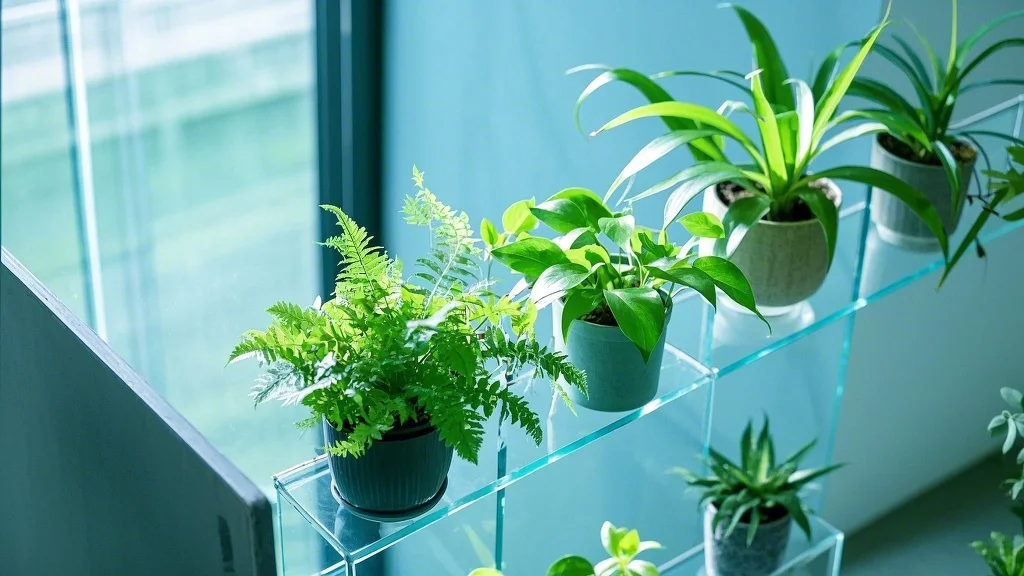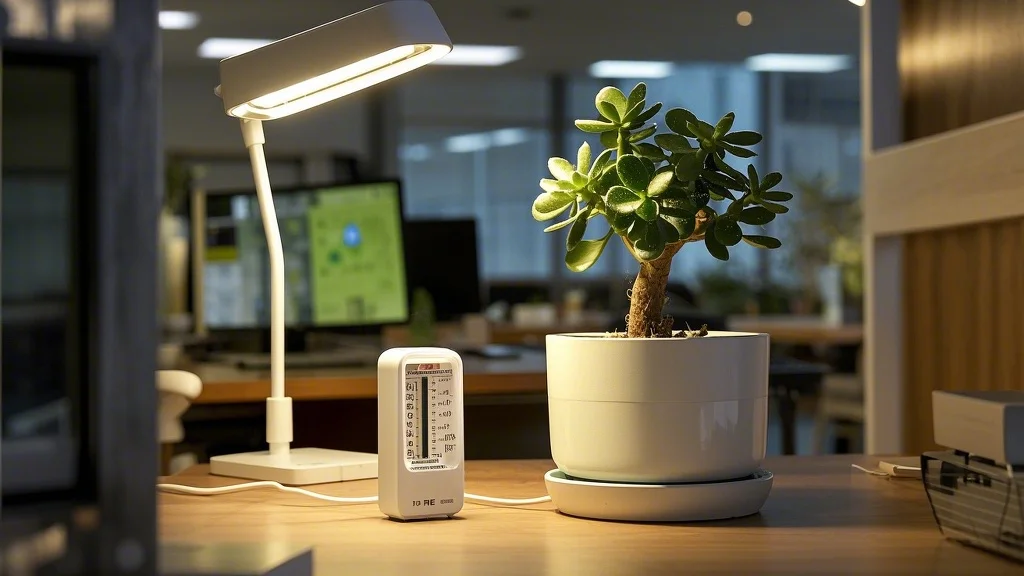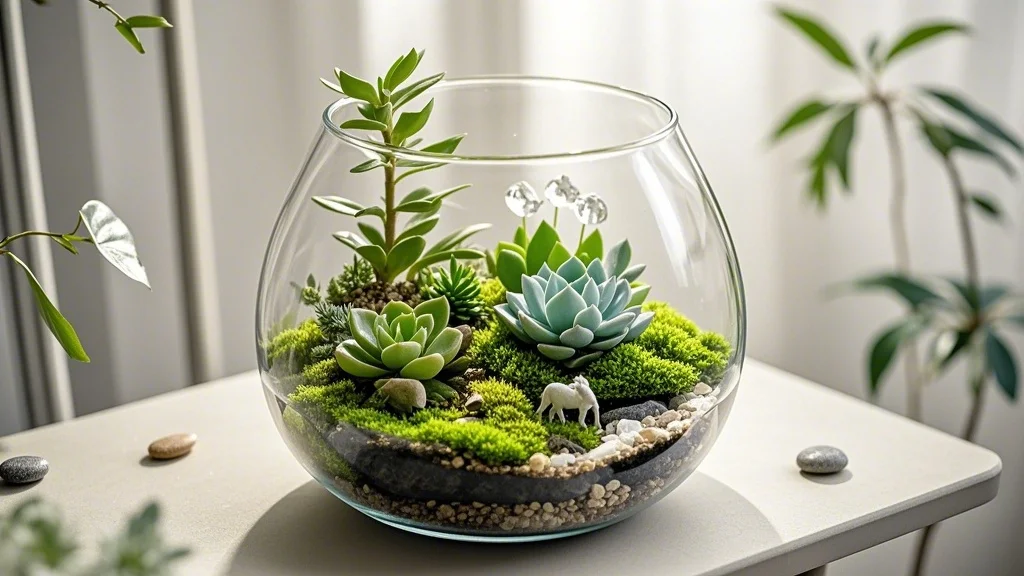The modern office environment benefits tremendously from the presence of living plants. They purify the air, reduce stress, and add a touch of natural beauty to otherwise sterile spaces. However, for busy professionals who can’t commit to daily plant care and leave the office unattended on weekends, finding the right greenery becomes crucial. The ideal office plant must thrive despite irregular watering schedules and varying light conditions.
This guide showcases exceptional low-maintenance plants specifically suited for office environments where weekend neglect is inevitable. These resilient botanical companions will enhance your workspace while forgiving your occasional absence.
Contents
- 1 Why Choose Low-Maintenance Plants for Your Office?
- 2 Top Low-Maintenance Office Plants
- 2.1 1. Snake Plant (Sansevieria)
- 2.2 2. ZZ Plant (Zamioculcas zamiifolia)
- 2.3 3. Pothos (Epipremnum aureum)
- 2.4 4. Cast Iron Plant (Aspidistra elatior)
- 2.5 5. Chinese Evergreen (Aglaonema)
- 2.6 6. Rubber Plant (Ficus elastica)
- 2.7 7. Peace Lily (Spathiphyllum)
- 2.8 8. Spider Plant (Chlorophytum comosum)
- 2.9 9. Jade Plant (Crassula ovata)
- 2.10 10. Philodendron (Various species)
- 3 Best Practices for Office Plant Care
- 4 Creating an Office Plant Ecosystem
- 5 Conclusion
- 6 Product Recommendations for Office Plant Success
Why Choose Low-Maintenance Plants for Your Office?
Before diving into specific plant recommendations, let’s understand why certain plants are better suited for office environments:
- Drought tolerance: The ability to survive several days without water
- Adaptability to artificial lighting: Thriving under fluorescent lights or in low-light conditions
- Air-purifying qualities: Removing toxins from office air
- Stress reduction: Creating a more pleasant work environment
- Low pest susceptibility: Minimizing maintenance needs
Top Low-Maintenance Office Plants

1. Snake Plant (Sansevieria)
The snake plant tops our list for good reason. This architectural beauty features stiff, upright leaves with distinctive patterns that add visual interest to any office space.
Care Requirements:
- Light: Tolerates low light but thrives in bright indirect light
- Water: Once every 2-3 weeks; can survive several weeks without water
- Special Features: Excellent air purifier, removing toxins like formaldehyde and benzene
Snake plants store water in their thick leaves, making them exceptionally drought-resistant. Their striking appearance works well in modern office designs, and they’re available in various sizes—from desktop varieties to statement floor plants.
2. ZZ Plant (Zamioculcas zamiifolia)
The ZZ plant has gained popularity for its glossy, dark green leaves and nearly indestructible nature. Its bulbous rhizomes store water, allowing it to thrive despite irregular care.
Care Requirements:
- Light: Adapts to low light conditions but grows faster in medium light
- Water: Every 2-3 weeks; can go a month between waterings
- Special Features: Removes xylene and toluene from the air
The ZZ plant’s waxy leaves resist dust accumulation, making it particularly low-maintenance. Its slow growth means less frequent repotting, perfect for busy professionals who can’t dedicate time to plant care.
3. Pothos (Epipremnum aureum)
Pothos plants are versatile trailing vines that adapt to various office environments. Available in golden, marble queen, jade, and neon varieties, they add a cascading element to shelves or hanging planters.
Care Requirements:
- Light: Thrives in low to bright indirect light
- Water: When the top 2 inches of soil are dry (typically every 7-10 days)
- Special Features: Excellent air purifier; indicates when thirsty by slightly drooping leaves
While pothos appreciates regular watering, it recovers quickly from occasional drought. Its vining nature allows for creative placement options, and propagating cuttings is remarkably easy—perfect for expanding your office greenery.
4. Cast Iron Plant (Aspidistra elatior)
True to its name, the cast iron plant is virtually indestructible. This slow-growing plant features broad, dark green leaves that maintain their appearance with minimal care.
Care Requirements:
- Light: Thrives in low light; avoid direct sunlight
- Water: Every 2-3 weeks; highly drought-tolerant
- Special Features: Extremely resilient to temperature fluctuations and neglect
The cast iron plant earned its reputation during the Victorian era when it survived in dimly lit homes despite irregular care. This historical resilience makes it perfect for modern offices with similar challenges.
5. Chinese Evergreen (Aglaonema)
Chinese evergreens offer attractive variegated foliage in various patterns and colors, from silver to pink. These plants are particularly well-suited to offices with limited natural light.
Care Requirements:
- Light: Prefers low to medium light; variegated varieties need slightly brighter conditions
- Water: When the top inch of soil feels dry (approximately every 7-10 days)
- Special Features: Removes benzene and formaldehyde from the air
Chinese evergreens grow more tolerant of drought as they mature. Their compact size makes them ideal for desktops or small office spaces, and their colorful varieties add visual interest without requiring flowering.
6. Rubber Plant (Ficus elastica)
For offices with some natural light, rubber plants make impressive statement pieces. Their large, glossy leaves create a bold visual impact while requiring minimal care.
Care Requirements:
- Light: Medium to bright indirect light
- Water: Every 1-2 weeks; allow soil to dry between waterings
- Special Features: Excellent air purifier; available in burgundy or variegated varieties
Rubber plants are remarkably forgiving of irregular watering schedules. Their thick leaves store water effectively, allowing them to withstand weekend neglect. As they mature, they develop a tree-like appearance that adds sophistication to office environments.
7. Peace Lily (Spathiphyllum)
The peace lily offers the rare combination of flowering capability and low-maintenance care. Its glossy green leaves and occasional white blooms add elegance to office spaces.
Care Requirements:
- Light: Thrives in low to medium light
- Water: When leaves begin to droop slightly (typically every 7-10 days)
- Special Features: One of NASA’s top air-purifying plants; removes ammonia, benzene, formaldehyde, and trichloroethylene
While peace lilies prefer consistent moisture, they dramatically signal when thirsty by drooping—then quickly recover after watering. This visual indicator makes them ideal for busy professionals who might otherwise forget to check soil moisture.
8. Spider Plant (Chlorophytum comosum)
Spider plants feature arching variegated leaves and produce “spiderettes” that dangle from the mother plant. Their cascading growth habit works well in elevated planters or hanging baskets.
Care Requirements:
- Light: Bright indirect light; tolerates lower light conditions
- Water: When the top inch of soil is dry (approximately every 7-10 days)
- Special Features: Excellent air purifier; produces baby plants that can be propagated
Spider plants store water in their tuberous roots, allowing them to withstand occasional drought. Their ability to thrive under fluorescent lighting makes them particularly well-suited for offices without natural light.
9. Jade Plant (Crassula ovata)
This succulent brings good fortune according to feng shui principles while requiring minimal care. Its thick, glossy leaves and tree-like growth pattern create an attractive desktop specimen.
Care Requirements:
- Light: Bright indirect light; can adapt to medium light
- Water: When soil is completely dry (typically every 2-3 weeks)
- Special Features: Symbolizes prosperity and success; extremely drought-tolerant
Jade plants thrive on neglect, making them perfect for busy professionals. Their water-storing leaves allow them to survive extended periods without irrigation, and they actually prefer drying out completely between waterings.
10. Philodendron (Various species)
Philodendrons come in climbing and non-climbing varieties, offering versatility for different office spaces. Their heart-shaped leaves add a tropical touch to work environments.
Care Requirements:
- Light: Low to bright indirect light
- Water: When the top inch of soil is dry (approximately every 7-10 days)
- Special Features: Excellent air purifier; available in various leaf shapes and sizes
Philodendrons communicate their needs clearly—yellowing leaves indicate overwatering, while brown edges suggest underwatering. This feedback mechanism helps even novice plant parents provide appropriate care.
Best Practices for Office Plant Care

Even the most resilient plants benefit from some basic care. Here are strategies to help your office plants thrive despite weekend neglect:
1. Strategic Watering Schedule
Water thoroughly on Fridays before leaving for the weekend. Deep watering encourages roots to grow downward, accessing moisture reserves when the surface soil dries out.
2. Self-Watering Solutions
Consider these options for extended absences:
- Self-watering planters: Containers with reservoirs that supply water as needed
- Water globes: Glass bulbs that slowly release water into soil
- Wicking systems: Simple DIY solutions using cotton rope to draw water from a nearby container
3. Appropriate Potting Medium
Use soil mixes designed for the specific plant type:
- For succulents and drought-tolerant plants: Well-draining cactus mix
- For tropical plants: Standard potting soil with added perlite for improved drainage
4. Strategic Placement
Position plants based on their light requirements:
- North-facing windows: Low-light plants like snake plants and ZZ plants
- East-facing windows: Medium-light lovers like peace lilies and philodendrons
- South or west-facing windows: Set plants back from direct sunlight or use sheer curtains to filter intense rays
5. Seasonal Adjustments
Remember that plants require less water during winter months when growth slows. Adjust your watering schedule seasonally to prevent overwatering during dormant periods.
Creating an Office Plant Ecosystem
Consider grouping plants with similar care requirements together to streamline maintenance. This approach creates micro-environments that can benefit multiple plants:
- Humidity stations: Clustering tropical plants increases local humidity through transpiration
- Light-sharing arrangements: Placing taller plants behind shorter ones allows both to receive appropriate light
- Care schedule zones: Organizing plants by watering needs simplifies maintenance routines
Conclusion
Incorporating plants into your office environment doesn’t require a green thumb or daily attention. The plants highlighted in this guide thrive despite weekend neglect, bringing natural beauty and improved air quality to your workspace with minimal effort.
Start with one or two varieties that match your office conditions and care availability. As you gain confidence, expand your indoor garden to create a more vibrant, stress-reducing environment that enhances productivity and wellbeing—even when you’re away for the weekend.
Remember that even the most resilient plants appreciate occasional attention. A quick Monday morning check-in with your botanical officemates will ensure they continue to thrive despite their independent nature.
Product Recommendations for Office Plant Success
To maximize your office plants’ resilience during weekend absences, consider these helpful tools:
- Self-watering planters: Lechuza self-watering containers
- Moisture meters: Simple probe devices that indicate when watering is needed
- Plant apps: Planta or Greg for customized care reminders
- Quality potting mix: Fox Farm or Black Gold for appropriate drainage
- LED grow lights: For offices with limited natural light
With the right plants and minimal supportive care, your office can become a thriving green space that survives—and even thrives—despite weekend neglect.








